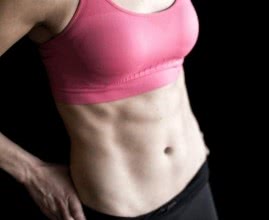Breast augmentation: implant types and placement.
- WHAT IS BREAST AUGMENTATION?
- WHAT ARE THE DIFFERENT TYPES OF IMPLANTS USED?
- DOES THE PLACEMENT OF THE IMPLANT MATTER?
Breast augmentation is an increasingly popular cosmetic surgery. Many of us have a friend who has had this surgery and it may seem like a casual procedure. While the procedure is safe and effective, there are still lots of choices to be made especially about implant types and the placement of your implants.
WHAT IS BREAST AUGMENTATION?
Breast augmentation is a surgical procedure to enhance the size of the breast. Augmentations can be done with the placement of an implant or fat transfer. Using an implant is the most common method. Breast augmentation is one of the most popular plastic surgery procedures. Silicone implants are a common type of implant used for breast augmentations. With implants, patients can have a visual representation of how their breasts will change in shape and size. Breast augmentations give the breasts a more full and round shape. You can be specific about the size and shape you are looking for with your surgeon. Many people who undergo this surgery wish to feel confident and more comfortable in their bodies after this surgery. [1]

WHAT ARE THE DIFFERENT TYPES OF IMPLANTS USED?
There are a few different options with implants. Silicone and saline are the most common implants, but there are some other options to consider with implants. These options are split into a few categories that include:
-
The surface of the implant can be textured or smooth: Textured implants are made by creating pores of different sizes to give a more natural look. Smooth implants are made by dipping the implant into liquid silicone.
-
Form-stable or fluid-form: Liquid silicone has an oily compound that is good for lubrication, this is used in fluid-form implants making them less stable. Form-stable implants retain the shape even at rest, these implants need a larger incision.
-
Implant shape being round vs anatomic. The shape of the implant is made by the gel inside of it. Gel-shell ratio is important when determining shape. An implant that will look more natural or anatomic is manufactured with a textured shell. Most patients receive round implants that may not look as natural.
In order to choose the right implant for the patient the patient’s height, weight, and body type must be considered. Patients that are taller or with wider shoulders need larger implants. Your surgeon will give you their best recommendation on what implants will work best for your body and best achieve your aesthetic goals. [2]
DOES THE PLACEMENT OF THE IMPLANT MATTER?
The surgeon and the patient will collaborate to determine the best implant placement for the look the patient wants to achieve. The implant is typically either placed above or below the pectoralis muscle. It is common in augmentation to place the implant above the pectoralis muscle. This reduces pain in recovery and displacement of the implant. Placing the implant below the pectoralis muscle is more common in reconstruction.
There are a few different incision types as well. The transaxillary is an incision at the armpit. The inframammary is an incision just below the breast. Some doctors try a periareolar approach, which is an incision on each breast. This approach looks the best, but there are more risks with scarring and scar tissue.
Whatever you decide you should feel comfortable and safe going into the surgery. Your doctor should have your best interests in mind. It is important with plastic surgery to realize that the results may not be exactly as you imagined during the healing process. As you heal, you will start to see more and more of your desired results. [3]
Sources:
[1] Fardo D, Sequeira Campos M, Pensler JM. Breast Augmentation. 2022 Sep 26. In: StatPearls [Internet]. Treasure Island (FL): StatPearls Publishing; 2022 Jan–. PMID: 29489168.
[2] Coombs DM, Grover R, Prassinos A, Gurunluoglu R. Breast augmentation surgery: Clinical considerations. Cleve Clin J Med. 2019 Feb;86(2):111-122. doi: 10.3949/ccjm.86a.18017. PMID: 30742581.
[3] Schrager S, Lyon SM, Poore SO. Breast Implants: Common Questions and Answers. Am Fam Physician. 2021 Nov 1;104(5):500-508. PMID: 34783490.














